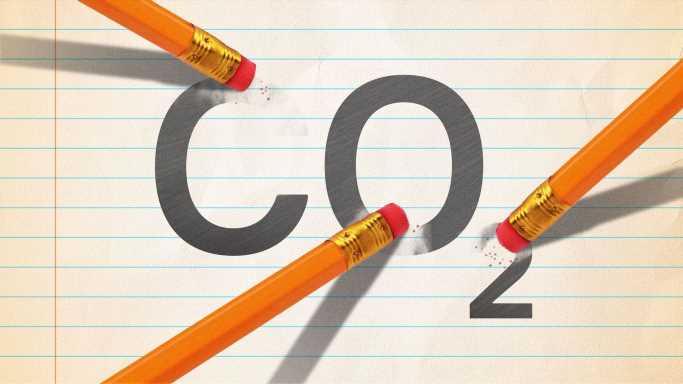Illustration: Shoshana Gordon/Axios
An industry group seeking stronger federal and state policies to scale up a suite of technologies that permanently remove CO2 from the atmosphere launched Thursday morning.
Driving the news: The Carbon Removal Alliance brings together 20+ members, spanning removal companies with multiple methods, buyers and more.
- Members include Charm Industrial, Lithos Carbon, Stripe, Climeworks and CarbonBuilt, to name a few.
- The executive director is Giana Amador, who co-founded the advocacy group Carbon180 in the mid-2010s.
- The new group's founding ethos is that projects should bring permanent and verifiable removal and show they're net negative.
Why it matters: Removal needs to scale up massively to help meet climate goals by complementing emissions-cutting energy tech.
What's next: "Having a member-oriented organization allows us to directly surface a lot of the challenges that entrepreneurs are facing, in developing and commercializing these technologies in a way that really hasn't happened before," Amador tells Axios.
- The alliance is organized as a 501(c)(4), allowing it to devote significant resources to lobbying in addition to its educational and intra-industry work.
The big picture: Private finance and federal support has grown in recent years.
- Some big steps: $3.5 billion in the bipartisan infrastructure law for creating Energy Department-led direct air capture "hubs" and expanded tax incentives for carbon-sucking projects in the new climate law.
- But Amador says important gaps remain. The organization's goals include federal incentives for a wider range of removal methods and implementing existing laws in a tech-neutral way.
What they're saying: Amador said energy policies have traditionally been written in a way that it's "easy to slot technologies in, like direct air capture, which have a single facility or a single point of storage."
- "That becomes very different when we're talking about approaches, for example, in the oceans or approaches where we're applying carbon reactive rocks on agricultural fields."
Quick take: It's a key part of a wider trend — the emergence of removal advocacy and industry lobbying infrastructure that's well-established with more mature climate tech like wind and EVs.
The bottom line: "We're at this really exciting inflection point for the field that as [it] matures and as carbon removal solutions scale, it's really important to make sure that the projects moving forward are extremely high quality," Amador said.
Source: Read Full Article
-
Far-right groups targeting young people, inquiry finds
-
Two-year-old dies after mum forgets about her in scorching hot car for 15 hours
-
As king, Charles inherits untold riches, and passes control of his own vast holdings to William.
-
Vince McMahon fans baffled by ‘hair dye and odd moustache’ as WWE and UFC merge
-
NRL grand final set to be hottest in history as ‘heat engine’ swamps Sydney


